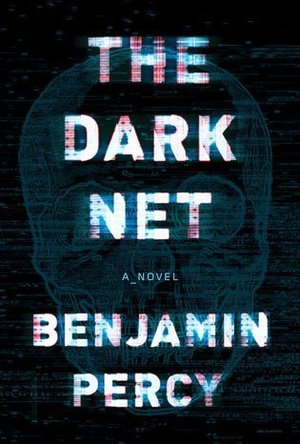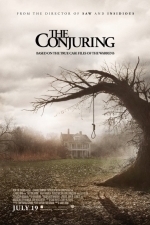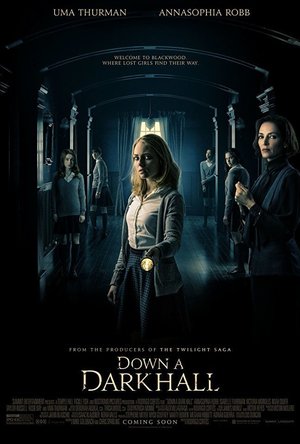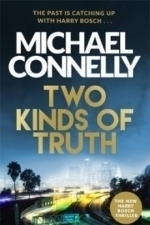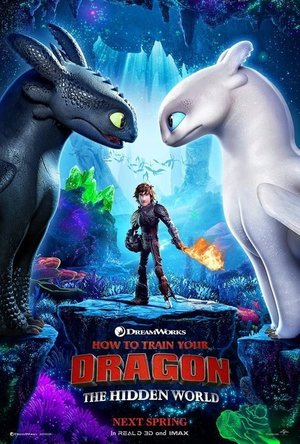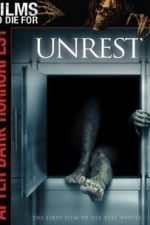Search
Zuky the BookBum (15 KP) rated The Dark Net in Books
Mar 15, 2018
I really think that the synopsis for this book is not up to scratch! Although, yes, the synopsis is what initially drew me to this book, after reading it I can say that the book is <i><b>WAY</b></i> better than the synopsis would make you believe!
This book tackles the subject of good and evil, with references to demons and black magic which I didnt get at all from the synopsis! I was expecting this to have a much deeper involvement with the dark net, whats on it and how its used. While yes, there is that to the book, its not necessarily its main focus.
To begin with, this lack of talk about the dark net actually made me hesitant about the book. I was expecting something so much different to what I was reading, I felt really disappointed. But, that feeling didnt last for long. This is so unlike anything Ive ever read before and that made everything about this book really exciting. Not to mention, this is a super clever book! It uses real life scenarios that we can all relate to, or at least know about, and explains it with a black magic twist.
For example, when talking about demon possession, it explains how small demons can take over and that causes a man to plow a lorry through a busy crowd, or a school shooting a one off awful occasion in history. But when a big, strong demon comes along, it can posses not only a person, but a nation. It uses examples of the Holocaust and the Rwandan Genocide, which I thought was really smart!
Characters in this book were excellent, but there were quite a lot of them that we needed to get to know. Juniper was by far my favourite of the bunch, Sarin coming in at a close second. I loved that there was a strong, bad-ass female character who wasnt irritating (Lela, Im looking at you!).
As for the story, I will say that it feels a bit all over the place at times. Its not difficult to wrap your head around but there are a lot of things pulled in to the story at different times and this sometimes got a bit manic. This is classed as a horror novel, and for me, there definitely were some creepy bits. The hounds especially made my skin crawl.
Overall, I ended up really loving this novel. It was short and sweet (although it almost took me a whole 7 days to read), and it was exciting, creepy and fast-paced! A great novel for anyone who likes a darker thriller. Lots of gruesome deaths and bad-ass characters.
<i>Thanks to BookBridgr and Hodder & Stoughton for sending me an ARC in exchange for an honest review.</i>
This book tackles the subject of good and evil, with references to demons and black magic which I didnt get at all from the synopsis! I was expecting this to have a much deeper involvement with the dark net, whats on it and how its used. While yes, there is that to the book, its not necessarily its main focus.
To begin with, this lack of talk about the dark net actually made me hesitant about the book. I was expecting something so much different to what I was reading, I felt really disappointed. But, that feeling didnt last for long. This is so unlike anything Ive ever read before and that made everything about this book really exciting. Not to mention, this is a super clever book! It uses real life scenarios that we can all relate to, or at least know about, and explains it with a black magic twist.
For example, when talking about demon possession, it explains how small demons can take over and that causes a man to plow a lorry through a busy crowd, or a school shooting a one off awful occasion in history. But when a big, strong demon comes along, it can posses not only a person, but a nation. It uses examples of the Holocaust and the Rwandan Genocide, which I thought was really smart!
Characters in this book were excellent, but there were quite a lot of them that we needed to get to know. Juniper was by far my favourite of the bunch, Sarin coming in at a close second. I loved that there was a strong, bad-ass female character who wasnt irritating (Lela, Im looking at you!).
As for the story, I will say that it feels a bit all over the place at times. Its not difficult to wrap your head around but there are a lot of things pulled in to the story at different times and this sometimes got a bit manic. This is classed as a horror novel, and for me, there definitely were some creepy bits. The hounds especially made my skin crawl.
Overall, I ended up really loving this novel. It was short and sweet (although it almost took me a whole 7 days to read), and it was exciting, creepy and fast-paced! A great novel for anyone who likes a darker thriller. Lots of gruesome deaths and bad-ass characters.
<i>Thanks to BookBridgr and Hodder & Stoughton for sending me an ARC in exchange for an honest review.</i>
Gareth von Kallenbach (980 KP) rated The Conjuring (2013) in Movies
Aug 6, 2019
It’s quite easy to think you have a ghost haunting your home. The creeks and cracks of settling foundation, leaky pipes, drafty windows or appliances can sound aerie. Why is it that our imaginations jump to that conclusion and not simply the truth. In some cases this causes people to essentially “cry wolf”, making it hard for us to believe in the true hauntings that have plagued families for generations. The Perron family was one of the many that had been terrorized by a malevolent spirit in their recently purchased farmhouse.
The story follows Ed and Lorraine Warren who’s lives have spent dealing with hundreds of cases of hauntings all around the US. From small hauntings to haunted items and more importantly exorcisms. The film begins with one of their possession cases that involves two young woman who were under the impression that they were being haunted by a little girl who took a likening to their Annabelle doll. They invited the girl to live inside of the doll not knowing that the entity was a daemon. (I do want to interject that the real Annabelle doll was a raggedy Anne doll but for the films sake they made the doll look like it was related to Chucky).
Annabelle is just an introduction to the audience of what Ed and Lorraine Warren do. One of their bigger cases is that of the Perron family. Roger (Ron Livingston), his wife Carolyn (Lili Taylor) and their five daughters move to an old farmhouse in a remote area not knowing the past of the land or the home itself. Ed and Lorraine agree to help the family exorcise their home, not realizing that the case was more dangerous than they had originally thought.
This film is by far the best true ghost story film that I have seen to date. Granted it has somewhat of a slow beginning, once the scares start happening it gets better and better. The acting was not the best nor the dialogue, however if you pay close attention to the story, those weaknesses of the film are easily forgotten. It is extremely refreshing to not see any CGI in a film like this and knowing that it can be as equally scary if not more with simple camera angles and excellent concepts. I also like the absence of blood and gore that has seen to be quite overdone with most horror films lately. The way that practical makeup was used to create such scary characters is only a small part of how much thought was put into this.
This film is scary and when I say that I really mean it. When I screened this, I was sitting in the middle of two big burley men who also jumped at every surprise. If you have been waiting for a film to scare you, this my friends will do it. It is definitely not for the faint of heart.
The story follows Ed and Lorraine Warren who’s lives have spent dealing with hundreds of cases of hauntings all around the US. From small hauntings to haunted items and more importantly exorcisms. The film begins with one of their possession cases that involves two young woman who were under the impression that they were being haunted by a little girl who took a likening to their Annabelle doll. They invited the girl to live inside of the doll not knowing that the entity was a daemon. (I do want to interject that the real Annabelle doll was a raggedy Anne doll but for the films sake they made the doll look like it was related to Chucky).
Annabelle is just an introduction to the audience of what Ed and Lorraine Warren do. One of their bigger cases is that of the Perron family. Roger (Ron Livingston), his wife Carolyn (Lili Taylor) and their five daughters move to an old farmhouse in a remote area not knowing the past of the land or the home itself. Ed and Lorraine agree to help the family exorcise their home, not realizing that the case was more dangerous than they had originally thought.
This film is by far the best true ghost story film that I have seen to date. Granted it has somewhat of a slow beginning, once the scares start happening it gets better and better. The acting was not the best nor the dialogue, however if you pay close attention to the story, those weaknesses of the film are easily forgotten. It is extremely refreshing to not see any CGI in a film like this and knowing that it can be as equally scary if not more with simple camera angles and excellent concepts. I also like the absence of blood and gore that has seen to be quite overdone with most horror films lately. The way that practical makeup was used to create such scary characters is only a small part of how much thought was put into this.
This film is scary and when I say that I really mean it. When I screened this, I was sitting in the middle of two big burley men who also jumped at every surprise. If you have been waiting for a film to scare you, this my friends will do it. It is definitely not for the faint of heart.
BookwormLea (3034 KP) rated Down a Dark Hall (2018) in Movies
Jul 26, 2020
Movie? Not great. Concept? Fabulous!
Contains spoilers, click to show
So I wouldn't call this a good horror. Maybe a passable thriller or drama??? Just the usual possession and strange happenings in a secluded school. (If you're looking for a better version of a similar thing, i recommend The Silenced.)
The general plot is that after her father dies when she's young, Katherine slowly becomes the stereotypical angry teen who lets the world know she hates it by letting it burn. She gets made to go to therapy after claiming she sees her father (which she does, because we watched his spirit say goodbye). She is invited to Blackwood. A mysteriously remote mansion home to 6 even more mysterious teachers, including Madame Duret, the headmistress. Kat is joined by 4 other girls of a seemingly lost cause. Duret calls them 'gifted' and 'misunderstood'. They are taught the usual lessons, Maths and English, music and art. And with the exception of Veronica (the literal definition of teenage nightmare) they all seem to excel at one thing in particular. Our lead girl Kat, music, specifically piano. She is taught by Durets son, Jules. Everything seems to be going well, one girl paints like a prodigy, another writes poems that could rock Shakespeares world, Kat does her piano thing rivalling Mozart and the last (who could basically still be in the role of Esther in Orphan) is solving maths problems that could save the world. That is until they start seeing shadows of people who aren't there, voices in their heads and they physically can't stop doing what they are gifted at, to the point where they don't eat or leave their rooms. After finding old files of other girls in similar situations who died, Kat and Veronica try to do something about it. Veronica is taken away and Kat is suddenly a Piano prodigy, almost possessed by the greats themselves. Yeah 'almost'. Because that's exactly what happened. They have been used as vessels for history's greatest men and women, who died too soon. How fantastic is that? If this movie was made better, that is a brilliant plot! But of course everything goes bad, just like their ghosts, the girls start dropping like flies, Poem girl kills herself, Painter literally starves herself, and crazy math girl is on the verge of escaping when she becomes enthralled in the beauty of the flames. Flames caused by Kat when she saves Veronica from being possessed by some weird demon thing who really doesn't get explained. They almost get out. Duret gets possseded and burned by the spirits she conjured. All the teachers die and Jules is crushed when he saves Kat. Of course there has to be surviors so Kat and Veronica get out, where on the brink of death, Kat sees her father again who makes her come back to life after she tries to go with him.
Overall, not a terrible movie, but if it had been made better, would probably be one of my favourite plots ever!
The general plot is that after her father dies when she's young, Katherine slowly becomes the stereotypical angry teen who lets the world know she hates it by letting it burn. She gets made to go to therapy after claiming she sees her father (which she does, because we watched his spirit say goodbye). She is invited to Blackwood. A mysteriously remote mansion home to 6 even more mysterious teachers, including Madame Duret, the headmistress. Kat is joined by 4 other girls of a seemingly lost cause. Duret calls them 'gifted' and 'misunderstood'. They are taught the usual lessons, Maths and English, music and art. And with the exception of Veronica (the literal definition of teenage nightmare) they all seem to excel at one thing in particular. Our lead girl Kat, music, specifically piano. She is taught by Durets son, Jules. Everything seems to be going well, one girl paints like a prodigy, another writes poems that could rock Shakespeares world, Kat does her piano thing rivalling Mozart and the last (who could basically still be in the role of Esther in Orphan) is solving maths problems that could save the world. That is until they start seeing shadows of people who aren't there, voices in their heads and they physically can't stop doing what they are gifted at, to the point where they don't eat or leave their rooms. After finding old files of other girls in similar situations who died, Kat and Veronica try to do something about it. Veronica is taken away and Kat is suddenly a Piano prodigy, almost possessed by the greats themselves. Yeah 'almost'. Because that's exactly what happened. They have been used as vessels for history's greatest men and women, who died too soon. How fantastic is that? If this movie was made better, that is a brilliant plot! But of course everything goes bad, just like their ghosts, the girls start dropping like flies, Poem girl kills herself, Painter literally starves herself, and crazy math girl is on the verge of escaping when she becomes enthralled in the beauty of the flames. Flames caused by Kat when she saves Veronica from being possessed by some weird demon thing who really doesn't get explained. They almost get out. Duret gets possseded and burned by the spirits she conjured. All the teachers die and Jules is crushed when he saves Kat. Of course there has to be surviors so Kat and Veronica get out, where on the brink of death, Kat sees her father again who makes her come back to life after she tries to go with him.
Overall, not a terrible movie, but if it had been made better, would probably be one of my favourite plots ever!
Kristy H (1252 KP) rated Two Kinds of Truth (Harry Bosch #20) in Books
Jan 10, 2018
Another wonderful mystery novel featuring Connelly's excellently developed lead detective
Michael Connelly's iconic detective, Harry Bosch, is back again. Harry's basically a volunteer for the San Fernando police department, working cold cases for the tiny force and mentoring their three young detectives. When they are called out for a murder of a father and son at a local pharmacy, Harry assists the inexperienced team in trying to track down the killers. The case leads Harry and his detectives into the dark world of opiates--both the big money of pill mills and the sad, cold side of addiction. Meanwhile, Harry hears from his former employer, the LAPD, when one of his thirty-year-old cases is reopened based on new evidence. Even worse, the killer is claiming Harry framed him. The case threatens Harry's most prized possession: his reputation as a cop, and he knows that no one will fight to clear his name like himself. The two unrelated cases pull at different sides of Bosch as he works to discover all different facets of the truth.
I love Harry Bosch so much, and there will be a hole in my heart when Connelly no longer writes about him. I actually moved this book up in my rotation (something I rarely ever do!) so I could read it on a weekend trip to Chicago, and my only regret is that it meant I finished it in about 48 hours, and now it's over. Per usual, Connelly gives us yet another wonderful mystery novel featuring his excellently developed lead detective. This one covers the timely topic of the opiate crisis, which looms fairly large in America today. It's well-researched, as always.
Reading a Bosch novel is like picking up with an old friend, and this one is no different. Our Bosch is aging, which this book acknowledges well. We see Bosch still grappling with having left the LAPD--who can he trust, what can he do with his life now. We even get some appearances from previous characters in earlier novels. Perhaps the best thing is a fairly large role for Bosch's half brother Mickey Haller, the famed "Lincoln Lawyer." These two are still figuring out their own relationship, but it's a treat for us readers to get a glimpse of Mickey; we even get to see some of his enjoyable courtroom antics. There's even an appearance from Mickey's investigator, Cisco! (See, it's like being old friends!)
And, of course, we can't forget the actual story, which, in usual Connelly style is excellent and tracks along flawlessly along Bosch's own journey. The opiate tale is both fascinating and depressing, while Bosch's unraveling of the backstory behind the reopened cold case will certainly keep you reading. There's never really any crazy twists or turns, but the novel moves along steadily and easily. There's both growth and angst with Bosch--I have to admit, I worry about the end of his arc, but I will still enjoy every moment I get with him until them.
Another enjoyable one for the Bosch canon--certainly recommend!
I love Harry Bosch so much, and there will be a hole in my heart when Connelly no longer writes about him. I actually moved this book up in my rotation (something I rarely ever do!) so I could read it on a weekend trip to Chicago, and my only regret is that it meant I finished it in about 48 hours, and now it's over. Per usual, Connelly gives us yet another wonderful mystery novel featuring his excellently developed lead detective. This one covers the timely topic of the opiate crisis, which looms fairly large in America today. It's well-researched, as always.
Reading a Bosch novel is like picking up with an old friend, and this one is no different. Our Bosch is aging, which this book acknowledges well. We see Bosch still grappling with having left the LAPD--who can he trust, what can he do with his life now. We even get some appearances from previous characters in earlier novels. Perhaps the best thing is a fairly large role for Bosch's half brother Mickey Haller, the famed "Lincoln Lawyer." These two are still figuring out their own relationship, but it's a treat for us readers to get a glimpse of Mickey; we even get to see some of his enjoyable courtroom antics. There's even an appearance from Mickey's investigator, Cisco! (See, it's like being old friends!)
And, of course, we can't forget the actual story, which, in usual Connelly style is excellent and tracks along flawlessly along Bosch's own journey. The opiate tale is both fascinating and depressing, while Bosch's unraveling of the backstory behind the reopened cold case will certainly keep you reading. There's never really any crazy twists or turns, but the novel moves along steadily and easily. There's both growth and angst with Bosch--I have to admit, I worry about the end of his arc, but I will still enjoy every moment I get with him until them.
Another enjoyable one for the Bosch canon--certainly recommend!
Lee (2222 KP) rated How To Train Your Dragon: The Hidden World (2019) in Movies
Feb 4, 2019
Wonderful ending to the trilogy
The Hidden World picks up a year on from the events of the last movie. After gaining a parent, then losing another, Hiccup now finds himself Chief to the residents of the Isle of Berk. But it's starting to become a little bit overcrowded - as Hiccup and friends continue to carry out raids on dragon hunters, rescuing dragons and bringing them back to the safety of the island, there's not so much room for the human residents anymore. This safe haven for dragons, along with the antics of Hiccup and his dragon rescuers, draws the attentions of an infamous, and very dangerous hunter by the name of Grimmel. He comes armed with a deadly crossbow and a set of dragons the likes of which Hiccup hasn't seen before - spewing acid like liquid which burns and destroys everything it comes into contact with, and he's out to rid the world of night fury dragons. Attempts by Hiccup to outwit and capture Grimmel backfire and it quickly becomes clear that Berk, and all of it's inhabitants, are in imminent and deadly danger.
Hiccup remembers his father telling him stories when he was a young boy, recalling tales that sailors returning home from sea had told. Stories of a hidden world, beyond the horizon at the edge of the world. Legend has it that this world is the birth place of all dragons, a wonderous place where they all live in harmony, hidden away from the world of humans. Hiccup decides that before Grimmel returns to the island with an army, they must all pack up and leave in search of the hidden world, where they can rebuild their homes and all live together in safety. But Grimmel has a very special dragon in his possession, one that he plans to use in order to capture Toothless - a female night fury, white in colour and dubbed a 'Light Fury'. This Light Fury succeeds in drawing the attentions of Toothless, who up until now was thought to be the last of his kind. And while plans are also afoot for Hiccup to marry Astrid, are our heroes finally about to grow up and go their separate ways in the name of love?
One of the biggest strong points of this series of movies is just how beautiful they are to look at, and The Hidden World is no exception. As the mating ritual between the two dragons unfolds, we spend long periods of time with little or no dialogue. From an amusing but clumsy courting dance on the beach to a beautiful flight as they become more comfortable with each other, the whole thing is just wonderfully captivating. The movie benefits from some very good action scenes too and Hiccups friends continue to bring humour to it all. It's a good mix, and never manages to feel boring at all. But this is definitely a movie about old friends, growing up and growing apart. And as the closing part of the movie trilogy, it manages to tie everything together and end it all perfectly.
Hiccup remembers his father telling him stories when he was a young boy, recalling tales that sailors returning home from sea had told. Stories of a hidden world, beyond the horizon at the edge of the world. Legend has it that this world is the birth place of all dragons, a wonderous place where they all live in harmony, hidden away from the world of humans. Hiccup decides that before Grimmel returns to the island with an army, they must all pack up and leave in search of the hidden world, where they can rebuild their homes and all live together in safety. But Grimmel has a very special dragon in his possession, one that he plans to use in order to capture Toothless - a female night fury, white in colour and dubbed a 'Light Fury'. This Light Fury succeeds in drawing the attentions of Toothless, who up until now was thought to be the last of his kind. And while plans are also afoot for Hiccup to marry Astrid, are our heroes finally about to grow up and go their separate ways in the name of love?
One of the biggest strong points of this series of movies is just how beautiful they are to look at, and The Hidden World is no exception. As the mating ritual between the two dragons unfolds, we spend long periods of time with little or no dialogue. From an amusing but clumsy courting dance on the beach to a beautiful flight as they become more comfortable with each other, the whole thing is just wonderfully captivating. The movie benefits from some very good action scenes too and Hiccups friends continue to bring humour to it all. It's a good mix, and never manages to feel boring at all. But this is definitely a movie about old friends, growing up and growing apart. And as the closing part of the movie trilogy, it manages to tie everything together and end it all perfectly.
Louise (64 KP) rated The Unseeing in Books
Jul 2, 2018
I am a lover of Historical fiction especially Victorian London so when I read the synopsis of ‘The Unseeing’ I knew I had to read it. This is Anna Mazzola’s debut novel and I can tell you it certainly delivered.
The year is 1837 and Sarah Gale is sentenced to be hung, she is believed to have aid and abet James Greenacre in the death of Hannah Brown. Sarah Gale was having an on/off relationship with Greenacre and living with him in his home until he met Hannah. Hannah Brown was a spinster with a bit of money and business’s in her possession,until her body parts were found randomly around London.Greenacre a conniving man that he is only wanted Hannah for her money and threw Sarah out a few days before Christmas. A few days after Christmas Hannah Brown is gone and Sarah Gale is back in Greenacre’s bed. Sarah is adamant that she knows nothing about the disappearance or death of Hannah Brown, but no-one believes her.
Sarah Gale and a Women’s institute have requested Sarah to be pardoned as she is to be hung but is adamant she knows nothing. Edmund Fleetwood has been assigned the case, his job is to see if she will talk or if there is any new evidence. This is one of the most spoken about cases of the time and this could be the career break that Edmund needs, however Sarah Gale is still adamant that she knows nothing. Can this meek, pale women really be involved in a murder?
This book was amazing, I felt like I had been transported to London in 1837. The writing was so atmospheric, the descriptions of the sounds, the streets and the way the characters spoke just blew me away, and it was consistent throughout the book. The Unseeing is a slow burn book that drip feeds you information slowly and you start piecing it together like a jigsaw puzzle. I was definitely hooked and needed to know how Hannah had come to be in pieces around London and what was going to happen to Sarah. There is a twist and I didn’t see it coming whatsoever and was left shocked for some time.
This book is based on a true crime that happened in 1837 and is known as the Edgeware Murder. Sarah Gale and John Greenacre are the names of the actual people involved and the court scripts can be seen at the Old Bailey website. You can definitely tell that the Mazzola had knowledge of the justice system as it was very well researched. I loved that Mazzola managed to make a fictional book out of a true crime and it makes it even more intriguing to read. It does make you think of how the justice system failed a lot of people back in Victorian times.
I will definitely be reading anything else Anna Mazzola release and recommend this book you are interested true crime and historical fiction.
I rated this 4 out of 5 stars
The year is 1837 and Sarah Gale is sentenced to be hung, she is believed to have aid and abet James Greenacre in the death of Hannah Brown. Sarah Gale was having an on/off relationship with Greenacre and living with him in his home until he met Hannah. Hannah Brown was a spinster with a bit of money and business’s in her possession,until her body parts were found randomly around London.Greenacre a conniving man that he is only wanted Hannah for her money and threw Sarah out a few days before Christmas. A few days after Christmas Hannah Brown is gone and Sarah Gale is back in Greenacre’s bed. Sarah is adamant that she knows nothing about the disappearance or death of Hannah Brown, but no-one believes her.
Sarah Gale and a Women’s institute have requested Sarah to be pardoned as she is to be hung but is adamant she knows nothing. Edmund Fleetwood has been assigned the case, his job is to see if she will talk or if there is any new evidence. This is one of the most spoken about cases of the time and this could be the career break that Edmund needs, however Sarah Gale is still adamant that she knows nothing. Can this meek, pale women really be involved in a murder?
This book was amazing, I felt like I had been transported to London in 1837. The writing was so atmospheric, the descriptions of the sounds, the streets and the way the characters spoke just blew me away, and it was consistent throughout the book. The Unseeing is a slow burn book that drip feeds you information slowly and you start piecing it together like a jigsaw puzzle. I was definitely hooked and needed to know how Hannah had come to be in pieces around London and what was going to happen to Sarah. There is a twist and I didn’t see it coming whatsoever and was left shocked for some time.
This book is based on a true crime that happened in 1837 and is known as the Edgeware Murder. Sarah Gale and John Greenacre are the names of the actual people involved and the court scripts can be seen at the Old Bailey website. You can definitely tell that the Mazzola had knowledge of the justice system as it was very well researched. I loved that Mazzola managed to make a fictional book out of a true crime and it makes it even more intriguing to read. It does make you think of how the justice system failed a lot of people back in Victorian times.
I will definitely be reading anything else Anna Mazzola release and recommend this book you are interested true crime and historical fiction.
I rated this 4 out of 5 stars
Gareth von Kallenbach (980 KP) rated Unrest (2006) in Movies
Aug 14, 2019
For many medical school students the most daunting class they face early in their studies is that of Gross Anatomy. The class which introduces aspiring doctors to their first bodies, as well as the reality and complexity of the human anatomy is often seen as a make or break moment for the challenging studies that lay ahead.
In the film Unrest Writer/Director/Producer Jason Todd Ipson follows a group of new students in a Gross Anatomy class. At first the students are shocked by the disfigured cadaver in front of them, but soon begin the dissection they are required to do.
The appearance of the corpse they are working on becomes a source of fixation for one of the students named Allison (Corri English), who becomes convinced that something is not right with the body they are working on, as something tells her that things are not as they seem.
Allison’s concerns are dismissed as her being overwhelmed by her first encounter with a body, and she is told that her concerns will soon pass. Soon after, one of the dissection group is affected by a freak accident, and Allison becomes convinced that there are evil forces at work, and that nobody will be safe until the mystery behind the corpse is settled.
As the body count rises, Allison and her friend Brian (Scot Davis), face a race against the clock and the supernatural to find the cause of the unrest and make things right, before they end up the next victims of a vengeful specter.
Unrest is a very impressive debut for Ipson, who himself was a promising surgeon before turning his talents to directing. The film is well paced and has plenty of tension and suspense without resorting to the clichéd horror staples that have become all too common.
The plot is refreshingly original and deeper than most films in this genre attempt to achieve, as its complexity is deceiving simply. The film can be taken as a simple scare fest, but for those willing to look beneath the surface, there are deeper layers to the film that tackle areas such as the afterlife, intuition, possession, second sight, and the supernatural. While all of those have been covered before in various films, few have ever combined them in such an intelligent fashion that allows the audience to reach their own conclusions on the topics the film introduces.
The cast is solid especially Davis and English who take what could easily be stock characters and infuse a sense of purpose which helps the audience relate to them and their situation.
While the film might have what appears to some to be plot holes, the film is actually a clever examination of the spirit and afterlife, and delivers the goods. While much has been made about the alleged use of real body parts in the film, Ipson is careful not to let his film become a gratuitous gore fest and uses blood and carnage only in the amounts necessary to propel the story.
Unrest is a very solid effort that marks the emergence of a talent to be watched and will delight fans of the genre who want some intelligence with their horror.
In the film Unrest Writer/Director/Producer Jason Todd Ipson follows a group of new students in a Gross Anatomy class. At first the students are shocked by the disfigured cadaver in front of them, but soon begin the dissection they are required to do.
The appearance of the corpse they are working on becomes a source of fixation for one of the students named Allison (Corri English), who becomes convinced that something is not right with the body they are working on, as something tells her that things are not as they seem.
Allison’s concerns are dismissed as her being overwhelmed by her first encounter with a body, and she is told that her concerns will soon pass. Soon after, one of the dissection group is affected by a freak accident, and Allison becomes convinced that there are evil forces at work, and that nobody will be safe until the mystery behind the corpse is settled.
As the body count rises, Allison and her friend Brian (Scot Davis), face a race against the clock and the supernatural to find the cause of the unrest and make things right, before they end up the next victims of a vengeful specter.
Unrest is a very impressive debut for Ipson, who himself was a promising surgeon before turning his talents to directing. The film is well paced and has plenty of tension and suspense without resorting to the clichéd horror staples that have become all too common.
The plot is refreshingly original and deeper than most films in this genre attempt to achieve, as its complexity is deceiving simply. The film can be taken as a simple scare fest, but for those willing to look beneath the surface, there are deeper layers to the film that tackle areas such as the afterlife, intuition, possession, second sight, and the supernatural. While all of those have been covered before in various films, few have ever combined them in such an intelligent fashion that allows the audience to reach their own conclusions on the topics the film introduces.
The cast is solid especially Davis and English who take what could easily be stock characters and infuse a sense of purpose which helps the audience relate to them and their situation.
While the film might have what appears to some to be plot holes, the film is actually a clever examination of the spirit and afterlife, and delivers the goods. While much has been made about the alleged use of real body parts in the film, Ipson is careful not to let his film become a gratuitous gore fest and uses blood and carnage only in the amounts necessary to propel the story.
Unrest is a very solid effort that marks the emergence of a talent to be watched and will delight fans of the genre who want some intelligence with their horror.

Cosmic Cabaret
Rosalie Redd, Jayne Fury, C.J. Cade, Kat Vancil, Blaire Edens, Diana Rivis, Tessa McFionn, Dena Garson, Selene Grace Silver, Cailin Briste, Athena Grayson , Jenna Lincoln and Kerry Adrienne
Book
Where Hearts Collide in the Greatest Show in Space Join us aboard Blue Star Line’s crown jewel,...
Science_Fiction Romance Anthology
LeftSideCut (3776 KP) rated Wonder Woman 1984 (2020) in Movies
Dec 22, 2020 (Updated Jul 5, 2021)
In this sequel to the so far best film of the DCEU, Patty Jenkins dares to ask, what if Wishmaster was a family friendly superhero movie?
Wonder Woman 1984 is an overall mixed experience, but let's begin with some positives. For a start, Gal Gadot is Wonder Woman through and through. She shined in the first movie, and is just as bright the second time around. What ever plans are afoot for the future of the DCEU, she should rightly be at the forefront.
Another cast highlight is Kristen Wiig. Her character is designed to be the sympathetic good guy who yearns for more acceptance and influence on the people around her, the relatable type, who inevitably turns into the tragic antagonist. Her arc is handled so-so, and is plagued with cliché "nerdy-girl-becomes-attractive" moments, but Wiig is clearly having a blast in this role, and the movie is better for having her around.
Pedro Pascal is also here as classic DC villain Maxwell Lord. He camps it up to the max, and does well in the seedy businessman type role, but again, his arc is handled in a so-so manner.
It has some genuinely decent set pieces. Highlights include a fun (if a little drawn out) opening scene, and then the big desert car chase glimpsed in the trailers. The CGI is also pretty good (for the most part, I'll get to that in a second) and a few more out-there details (no spoilers here) lifted straight from the comics that add that extra sweet spot of nerdy delight.
This all being said, WW84 does unfortunately suffer from a few pitfalls. The big glaring problem is the pacing. This film is 2.5 hours long, and boy does it drag in places. It could have easily lost 30 minutes without impacting the story, and the end results feels bloated and a bit directionless.
As mentioned above, the effects are great for the most part, but as the trailers show, Cheetah looks a little...off when she eventually turns up. She sort of looks like a colourless CGI blob when engaged in battle, and it's a shame, because some of the close ups look great, as is the overall design of her character.
Some of the narrative beats are a bit choppy, I get the feeling that some parts were cut that could have better explained some things, and then there are some plot beats that just straight up don't make a lick of sense.
And then there's Steve Trevor... Chris Pine is enjoyable enough as per usual, but honestly, his inclusion just feels a little forced. There's an obvious morally tearing plot point as to why he's here, but I felt that overall he just added to the bloatedness. And that's without addressing weird, kind of rapey body possession thing that's going on.
I had an ok time with WW84, but it's held back by a shit tonne of unnecessary clutter that seals it's status as an inferior sequel.
Wonder Woman 1984 is an overall mixed experience, but let's begin with some positives. For a start, Gal Gadot is Wonder Woman through and through. She shined in the first movie, and is just as bright the second time around. What ever plans are afoot for the future of the DCEU, she should rightly be at the forefront.
Another cast highlight is Kristen Wiig. Her character is designed to be the sympathetic good guy who yearns for more acceptance and influence on the people around her, the relatable type, who inevitably turns into the tragic antagonist. Her arc is handled so-so, and is plagued with cliché "nerdy-girl-becomes-attractive" moments, but Wiig is clearly having a blast in this role, and the movie is better for having her around.
Pedro Pascal is also here as classic DC villain Maxwell Lord. He camps it up to the max, and does well in the seedy businessman type role, but again, his arc is handled in a so-so manner.
It has some genuinely decent set pieces. Highlights include a fun (if a little drawn out) opening scene, and then the big desert car chase glimpsed in the trailers. The CGI is also pretty good (for the most part, I'll get to that in a second) and a few more out-there details (no spoilers here) lifted straight from the comics that add that extra sweet spot of nerdy delight.
This all being said, WW84 does unfortunately suffer from a few pitfalls. The big glaring problem is the pacing. This film is 2.5 hours long, and boy does it drag in places. It could have easily lost 30 minutes without impacting the story, and the end results feels bloated and a bit directionless.
As mentioned above, the effects are great for the most part, but as the trailers show, Cheetah looks a little...off when she eventually turns up. She sort of looks like a colourless CGI blob when engaged in battle, and it's a shame, because some of the close ups look great, as is the overall design of her character.
Some of the narrative beats are a bit choppy, I get the feeling that some parts were cut that could have better explained some things, and then there are some plot beats that just straight up don't make a lick of sense.
And then there's Steve Trevor... Chris Pine is enjoyable enough as per usual, but honestly, his inclusion just feels a little forced. There's an obvious morally tearing plot point as to why he's here, but I felt that overall he just added to the bloatedness. And that's without addressing weird, kind of rapey body possession thing that's going on.
I had an ok time with WW84, but it's held back by a shit tonne of unnecessary clutter that seals it's status as an inferior sequel.

Magicbricks Property Search
Business and Lifestyle
App
It’s Stunning, Smart & Superior- MagicBricks iPhone app. MagicBricks iPhone app is an...
